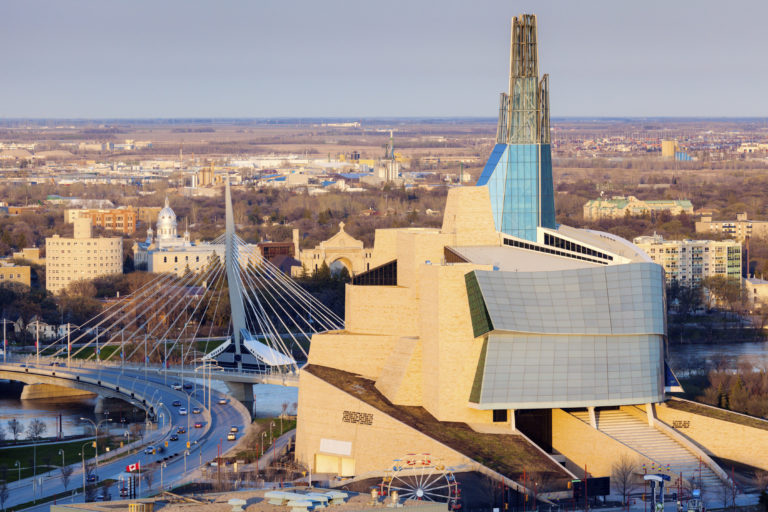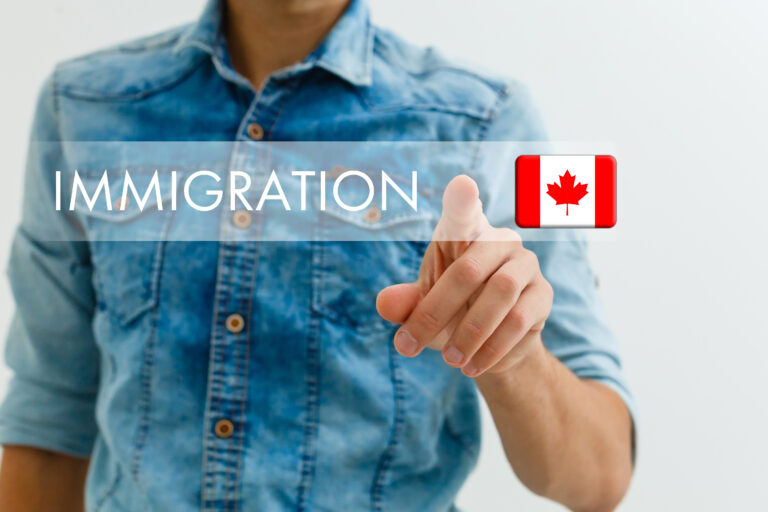The Parents and Grandparents Program (PGP) welcomed 16.6 per cent more parents and grandparents to Canada in the first half of this year compared to the same period last year, the latest data from Immigration, Refugees and Citizenship Canada (IRCC) reveals.
Read more:
More Immigrants Finding Jobs In Canada Than Before Pandemic
Jobs In Toronto: The Top 10 Occupations With Most Vacancies
British Columbia PNP Entrepreneur Streams: Province Continues To Issue Immigration Invitations
After riding a wave of stronger immigration that saw the number of new permanent residents through the PGP spike in May, that immigration program’s performance softened somewhat in June.
PGP softened in June after particularly strong May performance
During that month, Canada welcomed 3,610 new permanent residents through the PGP, or 3.7 fewer than the 3,750 in May.
That month, though, was one in which the number of parents and grandparents arriving under the PGP had spiked 64.4 per cent, or 1,455 newcomers, to 2,295.
Even with June’s softer performance, the PGP was still up, reaching 16,445 new permanent residentsfor the first half of this yearcompared to 14,100 during the same period last year.
Based on the level of immigration through the PGP in the first six months of this year, Canada could receive 32,890 new permanent residents through that program by the end of the year if the current trend continues.
Canada’s most populous province, Ontario, saw the greatest number of arrivals under the PGP in the first six months of this year with 13,290 parents and grandparents settling there.
The other provinces and territories attracted the following number of new permanent residents under the PGP during that period:
- Newfoundland and Labrador – 45
- Prince Edward Island – 15
- Nova Scotia – 140
- New Brunswick – 50
- Quebec – 2,555
- Manitoba – 955
- Saskatchewan – 900
- Alberta – 4,785
- British Columbia – 4,510
- Yukon – 15
- Northwest Territories – 15
- Nunavut – 0
With Ottawa’s much-higher immigration targets for the coming years, there’s little doubt the PGP numbers will close 2023 much higher than they did in 2022.
PGP growth expected to continue as immigrations targets rise
In its 2023-2025 Immigration Levels Plan, Ottawa has set the target for 2023 at 465,000 new permanent residents. The country is to welcome 485,000 new permanent residents in 2024 and another 500,000 in 2025.
That’s a total of 1.45 million immigrants to Canada over the coming three years.
Under the PGP, applicants pay $1,050 to sponsor a parent or grandparent and the process takes up to 23 months, with the people being sponsored required to provide biometrics after they apply. That processing time includes the time to provide those biometrics.
Once a Canadian citizen or permanent resident has submitted an interest in sponsoring these relatives, he or she is sent an Invitation to Apply (ITA0 and must then submit two applications to the PGP:
- the sponsorship application, and;
- the permanent residence application.
If those applications get the green light, the sponsor signs an agreement called an undertaking which starts on the day the sponsoree becomes a permanent resident of Canada.
Among the several requirements which need to be met to determine eligibility to sponsor a parent or grandparent, are:
- a receipt of an Invitation to Apply;
- being at least 18 years old;
- Canadian residency;
- being a Canadian citizen, a permanent resident of Canada, or a person registered in Canada as an Indian under the Canadian Indian Act;
- sufficient funds to support the parent or grandparent;
- proof of income, although a spouse or common-law partner can co-sign to combine their income with that of the sponsor, and;
- meeting all other requirements under the Immigration and Refugee Protection Act and the Immigration and Refugee Protection Regulations.
Sponsors ink deal with government to financially support parents and grandparents
All sponsors living outside of the province of Quebec, which has its own immigration system, must promise to financially support the sponsorees for a period of time.
This undertaking commits the sponsor to:
- providing financial support for sponsored family members for 20 years, starting when they become permanent residents;
- repaying any provincial social assistance (money from the government) sponsored family members get during that time, and;
- agreeing to certain responsibilities during the undertaking period in a sponsorship agreement.
That sponsorship agreement means that the sponsor will provide the basic needs of the sponsoree, including:
- food;
- clothing;
- utilities;
- personal requirements;
- shelter;
- fuel;
- household supplies, and;
- healthcare not covered by public health insurance, such as eye and dental care.
Sponsors remain financial responsible for relatives even in tough times
The sponsorship agreement is not one to be entered into lightly as it is obliges the sponsor to meet those requirements even in the case of:
- separation or divorce;
- family rifts;
- unemployment;
- change in finances, and even;
- death of the main applicant.
Sponsors who live in Quebec must meet that province’s immigration sponsorship requirements after the IRCC approves of the sponsor. The length of the undertaking is 10 years for Quebec.
Due to the need for sponsors to accept responsibility for their parents and grandparents through sponsorship agreements under the PGP, past criminality and serious financial troubles can render a Canadian citizen or permanent resident ineligible for this program.
Applicants may not be eligible to sponsor their parents or grandparents if the sponsors:
- are in a jail, prison or penitentiary;
- didn’t pay back an immigration loan or performance bond;
- failed to make court-ordered family support payments such as alimony or child support;
- didn’t give the financial support specified under a sponsorship agreement to sponsor someone else in the past;
- declared bankruptcy and are not discharged;
- receive social assistance for a reason other than a disability;
- were convicted of a violent criminal offence, any offence against a relative or any sexual offence inside or outside Canada, or;
- can’t legally stay in Canada and must leave the country because they received a removal order.
The applicant cannot sponsor his or her spouse’s parents or grandparents, aka their in-laws, but can be a co-signer on that spouse’s application to bring to Canada his or her parents and grandparents.
The PGP program also does not allow a Canadian citizen or permanent resident to sponsor someone who is otherwise inadmissible to come to Canada.
The PGP is restricted to the applicant’s own parents and grandparents, related by blood or adoption.
IRCC urges applicants to keep their information current to avoid delays
“In case of divorce, you’ll need to submit separate applications if you sponsor divorced parents and grandparents,” notes the IRCC on its website.
“If your divorced parents or grandparents have a current spouse, common-law partner or a conjugal partner, these people become dependants on the application and can immigrate to Canada with your parents and grandparents, if approved.”
A PGP application can include the sponsor’s own brothers and sisters, or half-brothers and sisters, or step-brothers and step-sisters – but only if they qualify as dependent children of the sponsor’s parents.
Delays in processing can quickly occur when the IRCC is faced with information which is no longer accurate and so Canadian immigration officials encourage applicants to keep their contact information and application details up to date.
Important information which must be updated includes:
- changes in relationship status;
- birth or adoption of a child;
- death of an applicant or dependant;
- contact information such as e-mail addresses, phone numbers, and mailing addresses.
The applicant is responsible for going into the application and updating it with this information him or herself.
“Don’t mail us changes to your contact or application information,” notes the IRCC. “If you do, we won’t acknowledge your request and we won’t update your application.”
Canadian immigration officials notify applicants under the PGP as soon as they begin to process the application, sending them both an application number and an acknowledgement of receipt of the application.
The IRCC then assesses both the applicant’s eligibility as a sponsor and the person being sponsored for permanent residence.
“If we refuse you as a sponsor, you can choose to have us keep processing the application for permanent residence for your family members,” notes the IRCC.
Choosing to have the IRCC continue processing the application at that point means the sponsor forgoes all fees which have been paid.
By choosing to withdraw the application in the eventuality of being deemed ineligible to sponsor, the applicant can get all of his or her fees back, minus the $75 sponsorship fee.
Once Canadian immigration officials have approved a sponsor under the PGP, they then turn their attention to the people being sponsored to determine their eligibility under the program.
The IRCC will typically request documents from those being sponsored, including:
- medical exam results;
- police certificates, and;
- biometrics.
Letters requesting that biometric information are sent to the parents or grandparents and their dependent children as named in the application and they then have 30 days to provide the biometric information at the closest collection point.









